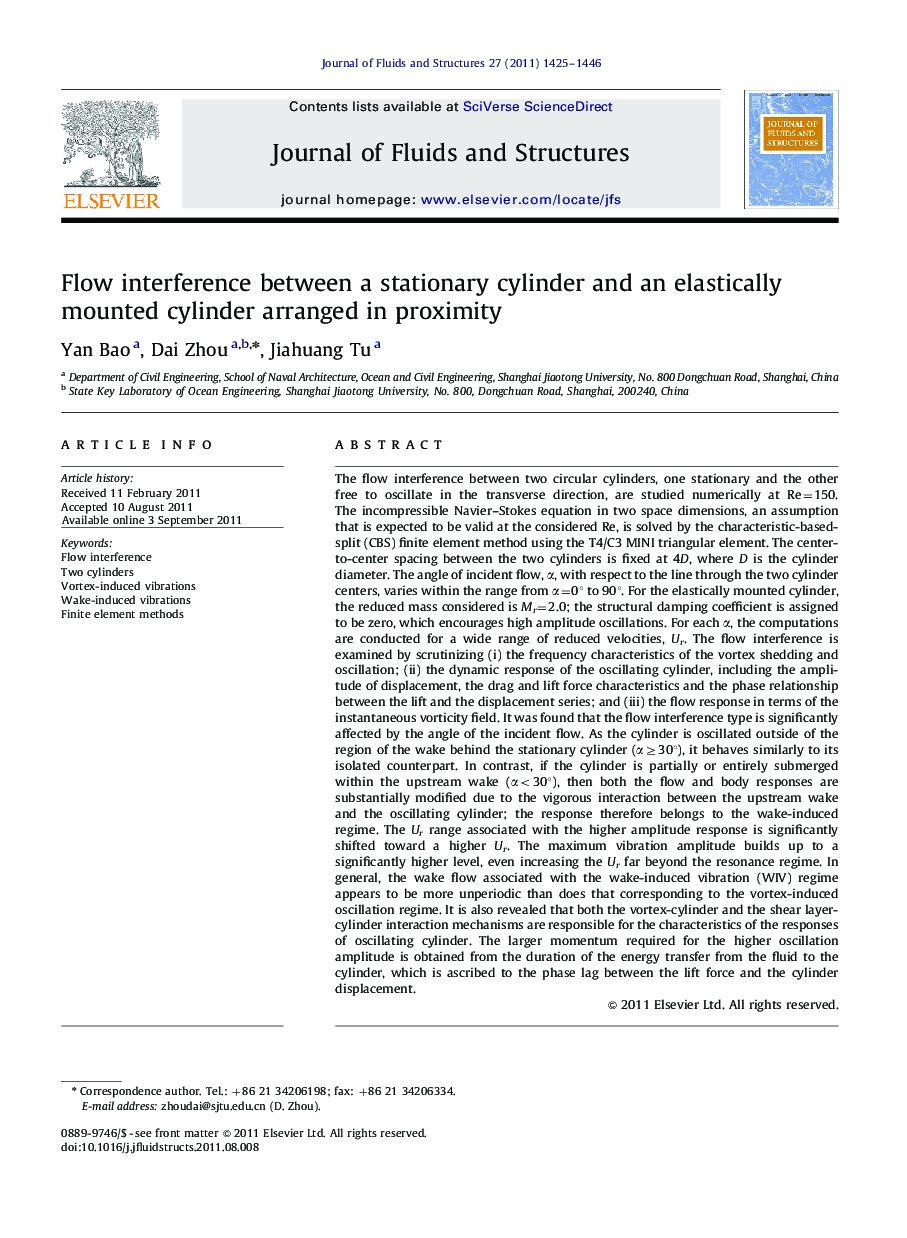| کد مقاله | کد نشریه | سال انتشار | مقاله انگلیسی | نسخه تمام متن |
|---|---|---|---|---|
| 792425 | 902129 | 2011 | 22 صفحه PDF | دانلود رایگان |

The flow interference between two circular cylinders, one stationary and the other free to oscillate in the transverse direction, are studied numerically at Re=150. The incompressible Navier–Stokes equation in two space dimensions, an assumption that is expected to be valid at the considered Re, is solved by the characteristic-based-split (CBS) finite element method using the T4/C3 MINI triangular element. The center-to-center spacing between the two cylinders is fixed at 4D, where D is the cylinder diameter. The angle of incident flow, α, with respect to the line through the two cylinder centers, varies within the range from α=0° to 90°. For the elastically mounted cylinder, the reduced mass considered is Mr=2.0; the structural damping coefficient is assigned to be zero, which encourages high amplitude oscillations. For each α, the computations are conducted for a wide range of reduced velocities, Ur. The flow interference is examined by scrutinizing (i) the frequency characteristics of the vortex shedding and oscillation; (ii) the dynamic response of the oscillating cylinder, including the amplitude of displacement, the drag and lift force characteristics and the phase relationship between the lift and the displacement series; and (iii) the flow response in terms of the instantaneous vorticity field. It was found that the flow interference type is significantly affected by the angle of the incident flow. As the cylinder is oscillated outside of the region of the wake behind the stationary cylinder (α≥30°), it behaves similarly to its isolated counterpart. In contrast, if the cylinder is partially or entirely submerged within the upstream wake (α<30°), then both the flow and body responses are substantially modified due to the vigorous interaction between the upstream wake and the oscillating cylinder; the response therefore belongs to the wake-induced regime. The Ur range associated with the higher amplitude response is significantly shifted toward a higher Ur. The maximum vibration amplitude builds up to a significantly higher level, even increasing the Ur far beyond the resonance regime. In general, the wake flow associated with the wake-induced vibration (WIV) regime appears to be more unperiodic than does that corresponding to the vortex-induced oscillation regime. It is also revealed that both the vortex-cylinder and the shear layer-cylinder interaction mechanisms are responsible for the characteristics of the responses of oscillating cylinder. The larger momentum required for the higher oscillation amplitude is obtained from the duration of the energy transfer from the fluid to the cylinder, which is ascribed to the phase lag between the lift force and the cylinder displacement.
Journal: Journal of Fluids and Structures - Volume 27, Issue 8, November 2011, Pages 1425–1446